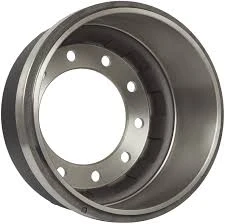
-
 Afrikaans
Afrikaans -
 Albanian
Albanian -
 Amharic
Amharic -
 Arabic
Arabic -
 Armenian
Armenian -
 Azerbaijani
Azerbaijani -
 Basque
Basque -
 Belarusian
Belarusian -
 Bengali
Bengali -
 Bosnian
Bosnian -
 Bulgarian
Bulgarian -
 Catalan
Catalan -
 Cebuano
Cebuano -
 Corsican
Corsican -
 Croatian
Croatian -
 Czech
Czech -
 Danish
Danish -
 Dutch
Dutch -
 English
English -
 Esperanto
Esperanto -
 Estonian
Estonian -
 Finnish
Finnish -
 French
French -
 Frisian
Frisian -
 Galician
Galician -
 Georgian
Georgian -
 German
German -
 Greek
Greek -
 Gujarati
Gujarati -
 Haitian Creole
Haitian Creole -
 hausa
hausa -
 hawaiian
hawaiian -
 Hebrew
Hebrew -
 Hindi
Hindi -
 Miao
Miao -
 Hungarian
Hungarian -
 Icelandic
Icelandic -
 igbo
igbo -
 Indonesian
Indonesian -
 irish
irish -
 Italian
Italian -
 Japanese
Japanese -
 Javanese
Javanese -
 Kannada
Kannada -
 kazakh
kazakh -
 Khmer
Khmer -
 Rwandese
Rwandese -
 Korean
Korean -
 Kurdish
Kurdish -
 Kyrgyz
Kyrgyz -
 Lao
Lao -
 Latin
Latin -
 Latvian
Latvian -
 Lithuanian
Lithuanian -
 Luxembourgish
Luxembourgish -
 Macedonian
Macedonian -
 Malgashi
Malgashi -
 Malay
Malay -
 Malayalam
Malayalam -
 Maltese
Maltese -
 Maori
Maori -
 Marathi
Marathi -
 Mongolian
Mongolian -
 Myanmar
Myanmar -
 Nepali
Nepali -
 Norwegian
Norwegian -
 Norwegian
Norwegian -
 Occitan
Occitan -
 Pashto
Pashto -
 Persian
Persian -
 Polish
Polish -
 Portuguese
Portuguese -
 Punjabi
Punjabi -
 Romanian
Romanian -
 Russian
Russian -
 Samoan
Samoan -
 Scottish Gaelic
Scottish Gaelic -
 Serbian
Serbian -
 Sesotho
Sesotho -
 Shona
Shona -
 Sindhi
Sindhi -
 Sinhala
Sinhala -
 Slovak
Slovak -
 Slovenian
Slovenian -
 Somali
Somali -
 Spanish
Spanish -
 Sundanese
Sundanese -
 Swahili
Swahili -
 Swedish
Swedish -
 Tagalog
Tagalog -
 Tajik
Tajik -
 Tamil
Tamil -
 Tatar
Tatar -
 Telugu
Telugu -
 Thai
Thai -
 Turkish
Turkish -
 Turkmen
Turkmen -
 Ukrainian
Ukrainian -
 Urdu
Urdu -
 Uighur
Uighur -
 Uzbek
Uzbek -
 Vietnamese
Vietnamese -
 Welsh
Welsh -
 Bantu
Bantu -
 Yiddish
Yiddish -
 Yoruba
Yoruba -
 Zulu
Zulu
Rust Issues and Solutions for Drum Brake Systems in Vehicles
Rust on Drum Brakes Causes and Solutions
Drum brakes are a crucial component in many vehicles, providing essential stopping power and ensuring safety on the road. However, like any other automotive component, they can be prone to wear and damage over time. One common issue that many vehicle owners may encounter is rust on drum brakes. Understanding the causes of rust and knowing how to address it is important for maintaining the performance and longevity of your braking system.
Understanding Rust Formation
Rust is a form of corrosion that typically forms when iron or its alloys come into contact with moisture and oxygen. Drum brakes, which consist of a circular drum that rotates with the wheel and brake shoes that press against the drum to create friction, are often made from iron. When these components are exposed to moisture or salty conditions, such as during winter months or in coastal areas, rust can form, compromising the brakes' efficiency.
The rust can develop in various areas of the drum brake system, particularly on the brake drum itself or the brake shoes. This can lead to increased stopping distances, reduced braking performance, and even complete brake failure in severe cases. Therefore, it is important to regularly inspect the brakes for any signs of rust or corrosion.
Preventive Measures
Preventing rust on drum brakes begins with regular maintenance checks. One effective way to minimize rust formation is to keep the brakes clean and free from debris. Road salt, dirt, and grime can trap moisture, which accelerates corrosion. Regularly washing your vehicle, especially during winter months, can help remove harmful contaminants.
rust on drum brakes

Another preventive measure is to apply a high-quality brake lubricant to the moving parts of the brake assembly during maintenance. This can help create a barrier against moisture and reduce the likelihood of rust developing. Additionally, consider using rust-resistant coatings on the drum and brake components during repairs or replacements.
Addressing Existing Rust
If you discover rust on your drum brakes, addressing the issue promptly is essential. Light surface rust can often be removed with a wire brush or sandpaper. Be sure to clean the area thoroughly and remove any loose particles. After cleaning, applying a rust-inhibiting primer can help protect the metal surfaces from future corrosion.
In cases where rust has significantly compromised the structural integrity of the brake components, such as deep pitting on the drum or shoes, replacement may be necessary. This is particularly true if the brakes are vibrating, making noise, or experiencing a loss in effectiveness.
Conclusion
Rust on drum brakes is an issue that can affect the safety and functionality of your vehicle. By understanding the causes and taking proactive measures to prevent and address rust, you can ensure that your drum brakes remain in optimal condition. Regular maintenance and timely repairs will not only enhance your vehicle's performance but also contribute to your overall safety on the road. Always consult with a professional mechanic if you're unsure about the condition of your drum brakes, as they can provide valuable insights and services to keep your braking system in top shape.
-
What Are Drum BrakesNewsJul.07,2025
-
Understanding Brake Drum MaterialNewsJul.07,2025
-
Semi-Trailer Brake Drum: A Key Component for Extreme Loads and Long-Distance TransportNewsJul.07,2025
-
Drum Brake Pads for SaleNewsJul.07,2025
-
Brake Drums for SaleNewsJul.07,2025
-
Brake Drum ManufacturerNewsJul.07,2025
-
Aluminum Brake Drums: The Future of High-Performance CarsNewsJul.07,2025
